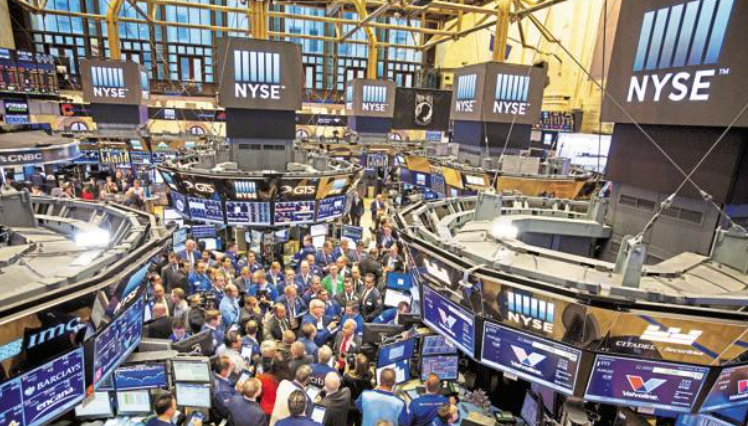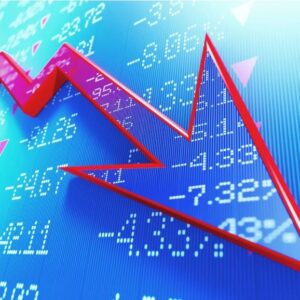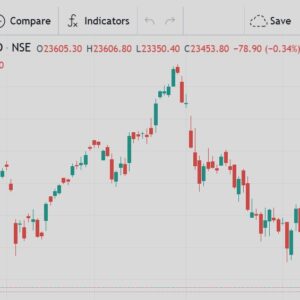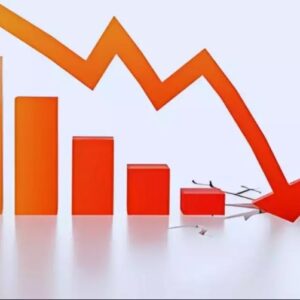Analysis of US Market Performance on February 14th

On February 14th, the US markets experienced notable fluctuations, driven by a confluence of economic events and geopolitical factors. The day’s trading activity reflected a mix of optimism and caution among investors, as they grappled with uncertainties surrounding inflation, monetary policy, and global geopolitical tensions. This analysis will delve into the key drivers behind the market movements on February 14th, examining both domestic and international factors influencing investor sentiment.
The unexpected rise in US consumer prices emerged as a central theme driving market dynamics on February 14th. The Consumer Price Index (CPI), a key measure of inflation, exceeded market expectations, sparking concerns about the potential for higher interest rates and tighter monetary policy. Rising inflationary pressures have prompted fears of a policy tightening cycle by the Federal Reserve, which could dampen economic growth and corporate earnings prospects. Investors closely monitored the Federal Reserve’s response to the inflation data, seeking clues about the central bank’s future policy trajectory.
Geopolitical tensions also weighed on investor sentiment, contributing to market volatility on February 14th. Escalating tensions between major global powers, such as the United States, Russia, and China, fueled concerns about the potential for military conflicts, trade disruptions, and supply chain disruptions. Heightened geopolitical risks have introduced a new layer of uncertainty into the investment landscape, prompting investors to adopt a more cautious approach and reassess their risk exposures across various asset classes.
In addition to domestic factors, international developments exerted a significant influence on US market performance on February 14th. The ongoing conflict between Russia and Ukraine, coupled with geopolitical tensions in the Middle East and Asia-Pacific region, raised concerns about the stability of global markets and the potential for contagion effects. Investors closely monitored geopolitical developments for any signs of escalation or de-escalation, which could have profound implications for risk appetite and asset allocation strategies.
Against this backdrop of economic and geopolitical uncertainties, certain sectors and industries outperformed others on February 14th. Technology stocks, particularly those related to cloud computing, artificial intelligence, and cybersecurity, attracted strong investor interest amid growing demand for digital transformation solutions and remote work technologies. Healthcare companies focused on pharmaceuticals, biotechnology, and medical devices also experienced robust performance, driven by ongoing innovation and the global focus on healthcare infrastructure.
On the other hand, sectors sensitive to interest rate changes and inflationary pressures, such as utilities, real estate, and consumer staples, faced headwinds on February 14th. Higher borrowing costs and input prices have raised concerns about margin compression and reduced profitability for companies operating in these sectors. Additionally, cyclical sectors such as industrials, materials, and energy experienced mixed performance, reflecting divergent trends in global demand, supply chain dynamics, and commodity prices.
Looking ahead, investors will continue to monitor a wide range of factors that could influence US market performance in the coming days and weeks. Key events to watch include upcoming economic data releases, central bank announcements, geopolitical developments, and corporate earnings reports. Amidst ongoing uncertainties, maintaining a diversified portfolio, conducting thorough research, and staying abreast of market developments will be essential for navigating volatile market conditions and identifying investment opportunities.
In conclusion, the US markets on February 14th witnessed notable fluctuations driven by a combination of economic, geopolitical, and international factors. Rising inflationary pressures, geopolitical tensions, and sector-specific trends influenced investor sentiment and market performance. Looking ahead, investors will need to remain vigilant and adaptive in response to evolving market dynamics and emerging risks.
Title: Performance Analysis of Dow Jones, S&P 500, and NASDAQ on February 14th
On February 14th, the Dow Jones Industrial Average, S&P 500, and NASDAQ Composite indices experienced significant fluctuations, reflecting a mix of economic data releases, geopolitical tensions, and sector-specific developments. This analysis will delve into the performance of each index on February 14th, examining the key drivers behind their movements and the implications for investors.
The Dow Jones Industrial Average, comprising 30 large-cap US stocks, started the day with modest gains but quickly turned negative as concerns about rising inflation and geopolitical tensions weighed on investor sentiment. The index closed the day lower, dragged down by declines in energy, financial, and industrial stocks. Rising oil prices and uncertainty surrounding the conflict between Russia and Ukraine added to the negative sentiment, prompting investors to rotate out of riskier assets and into safe-haven assets like gold and government bonds.
Similarly, the S&P 500 index, representing a broader cross-section of the US stock market, struggled to maintain momentum on February 14th, ending the day slightly lower. The index’s performance was influenced by mixed economic data releases, including higher-than-expected inflation figures and disappointing retail sales data. Concerns about the Federal Reserve’s response to rising inflationary pressures and the potential for interest rate hikes dampened investor sentiment, leading to a cautious approach among market participants.
In contrast, the NASDAQ Composite index, heavily weighted towards technology and growth stocks, outperformed its counterparts on February 14th, closing the day slightly higher. The index benefited from strength in the technology sector, particularly among companies involved in cloud computing, e-commerce, and digital payments. Favorable earnings reports from major tech companies and continued optimism about the long-term growth prospects of the sector bolstered investor confidence, offsetting concerns about inflation and geopolitical risks.
Sector-specific trends also influenced the performance of each index on February 14th. While technology stocks led the gains in the NASDAQ Composite, traditional value sectors such as energy, financials, and industrials faced headwinds in the Dow Jones and S&P 500 indices. Rising inflationary pressures and expectations of tighter monetary policy have raised concerns about the outlook for cyclical sectors, prompting investors to adopt a more selective approach to stock picking.
Looking ahead, investors will continue to monitor a range of factors that could impact the performance of the Dow Jones, S&P 500, and NASDAQ indices in the coming days and weeks. Key events to watch include further economic data releases, central bank announcements, geopolitical developments, and corporate earnings reports. Amidst ongoing uncertainties, maintaining a diversified portfolio and staying informed about market trends will be essential for navigating volatile market conditions and identifying investment opportunities.
In conclusion, the performance of the Dow Jones, S&P 500, and NASDAQ indices on February 14th reflected a mix of economic, geopolitical, and sector-specific factors. While rising inflationary pressures and geopolitical tensions weighed on investor sentiment, strength in the technology sector helped buoy the NASDAQ Composite index. Moving forward, investors will need to remain vigilant and adaptable in response to evolving market dynamics and emerging risks.









